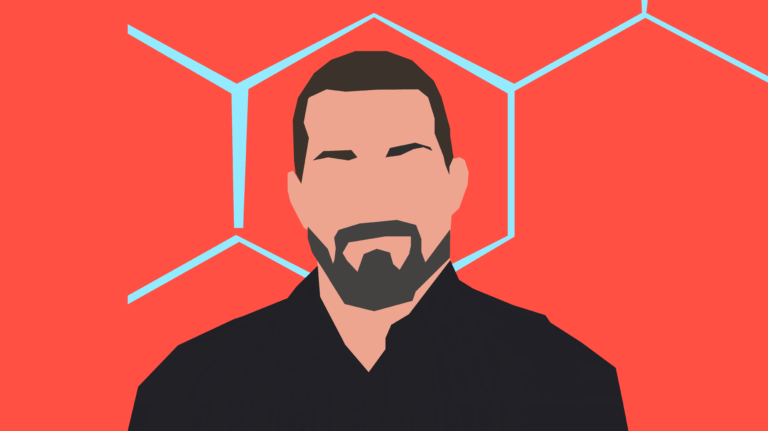What’s a Dopamine Detox (Important)?
When our dopamine levels are high, we tend to focus on what we want and feel motivated to go after those things. Our brain maintains a baseline level of dopamine, which can increase or decrease depending on our actions. It’s essential to keep baseline dopamine levels at a healthy level to maintain daily motivation.
Engaging in quick pleasurable activities can spike our dopamine very sharply, and our baseline levels of dopamine will drop after the peak has fallen. It can take hours, days, or even weeks to come back to normal. Leaving us unmotivated to pursue our goals. This uncomfortable state drives us to seek more meaningless pleasures, thereby creating a devastating cycle of increasing peaks and even greater drops.
To bring back our baseline levels of dopamine faster, we avoid all kinds of pleasurable activities (even good ones like reading books or hanging out with friends), which is called a dopamine detox or a dopamine fast.
There are, however, different approaches that can restore our baseline levels of dopamine quicker. These are your options:
- Recommended: Keep your baseline dopamine levels high with these 18 tools from Andrew Huberman, avoiding the need for a dopamine detox.
Alternative to Dopamine Detox.
Here’s what your day might look like, step by step, to boost back your baseline levels of dopamine. We’ll start from the morning and go all the way to bedtime.
1. After Waking Up: View Morning Sunlight.
If there are clear skies in the morning, spend 5–10 minutes in the sun without directly looking at it. Allow the sun’s rays to fall on your face.
In the presence of clouds, it’s recommended to stay outside for a longer duration. The cloudier it is, the longer you should aim to stay, ranging from 10 to 30 minutes. Position yourself facing east, where the sun is typically located.
Avoid wearing sunglasses during this time.
2. Breakfast: Eat tyrosine-rich foods.
Tyrosine is a precursor to dopamine and is synthesized from phenylalanine. Eating foods rich in tyrosine will support dopamine production.
Here are some foods rich in tyrosine, listed in descending order from highest to lower quantities:
- Soy Products: Foods like soybeans, tofu, and soy-based products are rich sources of tyrosine.
- Lean Meats: Lean meats like turkey, chicken, and lean cuts of beef contain significant amounts of tyrosine.
- Fish: Fish such as salmon, trout, and tuna are good sources of tyrosine.
- Dairy Products: Dairy items like yogurt, cheese, and milk also provide tyrosine.
- Eggs: Eggs are a source of tyrosine and other essential amino acids.
- Seeds and Nuts: Almonds, pumpkin seeds, and sesame seeds are examples of seeds and nuts with tyrosine.
- Legumes: Lentils, beans, and peas are legumes that contribute to tyrosine intake.
- Whole Grains: Quinoa, oats, and whole wheat products contain tyrosine as well.
3. Before Work (Main Productive Task): Do Something Even Harder.
When feeling unmotivated due to the above-mentioned reasons, engaging in an activity that requires even more effort can quickly restore your baseline dopamine levels.
So, if you’re struggling to find motivation to do your homework, try tackling a task that demands even greater effort. Here are some options:
- A cold shower or cold-water immersion (recommended right after waking up): Cold showers are always hard but can be particularly challenging in an unmotivated state, but they have the potential to not only restore our baseline dopamine levels quickly but also increase dopamine levels for hours without a subsequent crash.
Here are some things to keep in mind:
- It’s important to ensure the water is not dangerously cold, but cold enough to create a strong desire to get out promptly.
- When the water is too cold, staying in for a shorter duration, such as 30 seconds, is sufficient. If it’s not as cold, you can extend the time to up to 5 minutes.
- If you can comfortably stay in the shower for 5–10 minutes, it indicates that the water is not cold enough.
- Exercise for one minute: This tactic will only work if you don’t want to exercise at all (like with all activities in this category).
Try to force yourself to get up and start an intense exercise, such as one minute of continuous push-ups. Very challenging and painful, good, not dangerous, good again.
You can choose any other exercise that’s equally hard, such as planks or pull-ups. The key is to push yourself with exercises that require significant effort. - Meditate for 10–20 minutes: During an unmotivated state, sitting still for 10–20 minutes can be quite challenging. If you find yourself in a similar situation, trying a guided meditation on YouTube or a meditation app might be beneficial.
4. Before Work II: Caffeine.
Around 100-400 mg of caffeine should do the trick. It not only gives dopamine a little kick, but also makes your body more receptive to the dopamine that’s floating around. Just be mindful not to indulge too close to bedtime.
5. Before Work III/During Break: NSDR (Non-sleep Deep Rest).
Engaging in 10–20 minutes of NSDR (Non-Sleep Deep Rest) can increase your dopamine levels. While dopamine release in other brain pathways are associated with motivation and drive, during NSDR, the increased dopamine release occurs within the nigrostriatal pathway, which is associated with divergent thinking and creativity.
According to a study, the dopamine release during NSDR was observed to be as much as 65% above baseline.
NSDR is similar to many meditation techniques and can be done lying or sitting. Here are free NSDR sessions (10, 15 & 20 minutes) based on Andrew Huberman’s protocol.
6. Anytime During the Day: Exercise.
Get moving! Regular aerobic exercise can amp up dopamine release and availability in your brain. So, aim for 30 minutes of moderate-intensity workouts most days of the week.
7. Before Bed: No Bright Lights After 10 P.M
Bright lights after 10 P.M (yes, even your smartphone 😢) can activate a brain area called the habenula and significantly decrease the amount of dopamine in your body. Here are some tips:
- Adjust Lighting: Dim the lights, use warmer tones, and position lights lower in the room. This is because the lower part of the eyes is more responsible for sending wakeful signals to the brain, similar to how morning sunlight from above hits your lower eyes.
- Limit Screen Time: Minimize screen exposure before bedtime. Utilize devices in night mode, which employs a yellow filter to reduce disruptive blue light.
- Use Blue Light Blocking Glasses: These glasses can help counteract the stimulating effects of blue light, promoting a more relaxed pre-sleep environment.
8. At Bedtime: Get Sufficient Quality Sleep.
When you sleep, your brain gets busy fixing stuff, like regulating dopamine and other important chemicals. So, when you get a good night’s sleep, it’s like giving your brain a well-deserved dopamine recharge.
Extra: Supplements for Dopamine (Experimental):
Here are some supplements for a dopamine boost, recommended by Andrew Huberman:
- L-Tyrosine: L-Tyrosine is an amino acid precursor to dopamine.
- Phenylethylamine (PEA) Supplementation (warning): PEA temporarily increases dopamine in the brain, aiding focus.
However, it’s succeeded by a subsequent crash. Therefore, take it only occasionally and adjust your actions accordingly.
It can be found in various foods, chocolate being one of the sources enriched in PEA. Other foods include, beef, chicken, fish, soy products, almonds, peanuts, and aged cheeses (like cheddar and Swiss cheese).
Personally, Huberman occasionally uses PEA as a focus and work aid, especially during intense mental work sessions. He typically combines 500 milligrams of PEA with 300 milligrams of Alpha-GPC. The dopamine increase from PEA remains for about 30 to 45 minutes. - Macuna Pruriens (warning): Also called velvet bean, it’s a tropical legume plant with bean pods rich in L-DOPA, a precursor to dopamine. Macuna Pruriens’ dopamine surge can lead to mood and motivation decline after, so take it with the crash in mind.
Conclusion.
While waiting (or dopamine detoxing) may work, it tends to take a lot of time. However, if you’ve been exposed to too many quick-dopamine sources for a long time (for example, partying for 2 days), leading to extremely low baseline dopamine levels, a dopamine detox can work alongside other methods mentioned here to get you back to normal faster.
Subscribe to get more tools from the world’s best minds right in your inbox.



